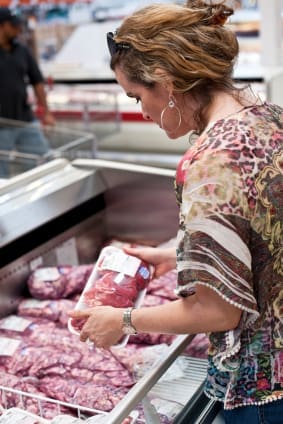A GLOBAL approach to positioning beef and lamb as premium consumer products is a step closer, with world-leading Australian research attracting new international collaboration.
A number of leading Australian scientists headed by Professor Dave Pethick, meat quality program leader with the Cooperative Research Centre for Sheep Industry Innovation (Sheep CRC), recently addressed a two-day meeting in Paris bringing together 80 meat scientists and other experts from 17 countries.
 Prof Pethick said the International Meat Quality Congress galvanised support for using the Meat Standards Australia system as a common language for implementing new consumer research around the world.
Prof Pethick said the International Meat Quality Congress galvanised support for using the Meat Standards Australia system as a common language for implementing new consumer research around the world.
“The aim of the congress was to encourage consumer-focused sensory research for beef and lamb with key international collaborating partners all using common protocols,” Prof Pethick said.
The workshop unanimously supported the need for evidence-based systems to underpin eating quality for lamb and beef in order to keep consumers purchasing products that are higher in price than the white meat competitors.
“We are now working towards a global model, which it has been suggested be called 3G for Global Guaranteed Grading, for sharing sensory data using the MSA protocols that can be used for scientific and for commercial purposes,” Dr Pethick said.
The congress was organised by Meat & Livestock Australia and the French National Institute for Agricultural Research (INRA), Europe’s top agricultural research institute and the world’s number two centre for the agricultural sciences.
The 19 presentations at the Congress all focussed on meat eating quality prediction methods which will allow modern beef and lamb products to meet the expectations of consumers who purchase red meat ‘meal solutions.’
MSA’s advantages recognised
Prof Pethick said while many countries had meat quality assessment systems in place, MSA was the only real system available to grade eating quality at the consumer level.
“The MSA approach differs markedly from other systems currently employed. Firstly, it is based on consumer responses and secondly, for beef, it independently grades each cut rather than applying a common grade to the entire carcase,” he said.
“The system includes information about all the events that have occurred up until the point when the steak was cooked and eaten – genetics, back grounding and finishing, pre-slaughter handling of the animal and post-slaughter treatment and processing of the carcase system.”
Prof Pethick said common protocols have now been developed in several collaborating countries and regions, including France, Korea, Poland, Ireland, New Zealand, South Africa, and the US.
“Across the countries, the data has clearly showed enormous commonality in how consumers respond to beef in particular. However, extra precision can be achieved if some adjustments are made for issues like alternate production systems that are not included in the MSA prediction model – for example, beef and dairy bulls or dairy cows, subtle consumer differences between countries and new cooking methods.”
Prof Pethick is leading a Sheep CRC research program aimed at implementing a cuts-based MSA grading system for the Australian lamb industry, with consumer testing currently underway in China and the US to assess consumer taste differences, perceptions of various cuts and ages of sheepmeats, and the impacts of different cooking styles such as Asian hot pot methods.
He said the Paris meeting was a major breakthrough for the Australian red meat sector as the benefits of a combined global database and cooperative development of eating quality standards and prediction routines would far outweigh the sum of individual isolated databases.
“This is due to the largely complementary nature of existing data and the benefit of cross linkage at animal and consumer level, as well as the cost and efficiency gains for individual partners from collaboration, merging of data, access to multiple research facilities and a larger pool of scientific expertise.”



HAVE YOUR SAY